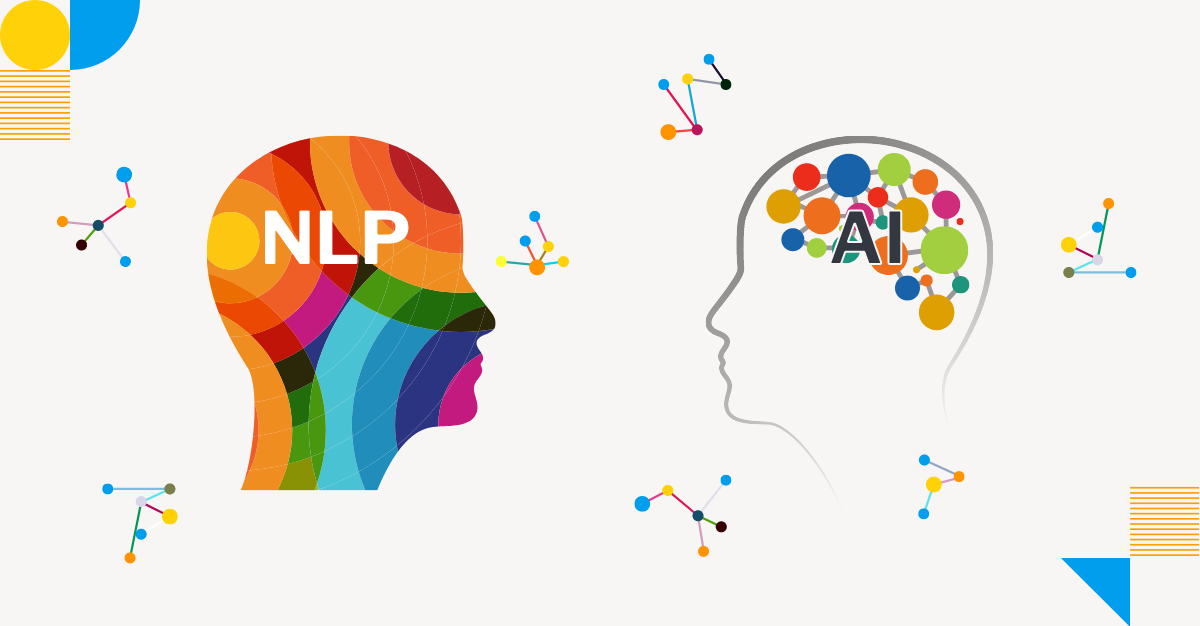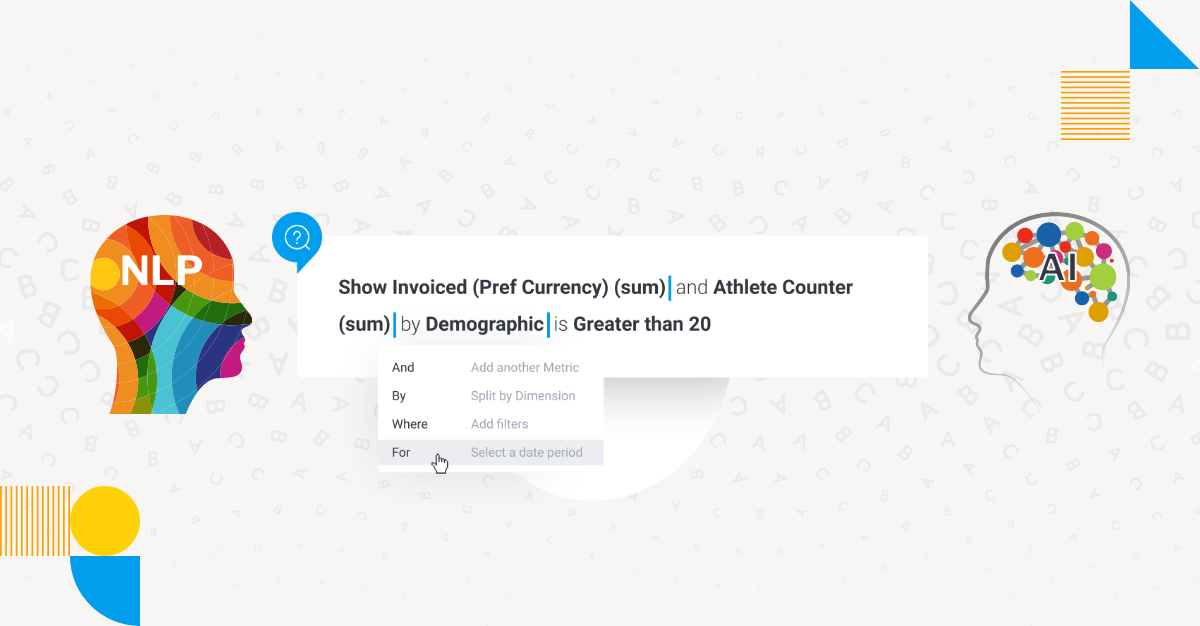
What is Natural Language Processing (NLP)? A Beginner's Guide
The way we interact with computers and digital systems has come a long way. Gone are the days of cryptic commands and rigid syntax; today, we can speak naturally to our devices, ask questions in complete sentences, and even have (somewhat) intelligent conversations with chatbots. This transformation is largely thanks to a fascinating field of artificial intelligence (AI) called natural language processing (NLP).
Natural language processing is one of several technologies used in modern business intelligence (BI) solutions to benefit people who want to analyze their most important business metrics, but require more help in understanding the true meaning behind the numbers. But how exactly is NLP implemented in today’s analytics solutions?
Decoding the jargon: What is NLP in plain english
Natural language processing enables computer and software tools to grasp the nuances of human language as well as a native speaker. It’s a subfield of AI that equips business solutions with the ability to process, understand, and even generate human language in its various forms, including text, numbers, and speech. Think of it as the underlying intelligence that allows machines to "read" and "write" in a human-like way.
NLP is one branch of natural language technology (NLT), and sits alongside natural language generation (NLG) and natural language query (NLQ). All three of these natural language technologies are regularly used to power features in modern business intelligence and analytics solutions, typically with the aim of streamlining the data analysis process for end-users.
NLP differs from the other branches of natural language technology in its focus on understanding and interpreting human language, and breaking down text into its components, analyzing its meaning, and extracting relevant information.
How does natural language processing (NLP) work?
Think about how you communicate with a friend. You don't just throw out words in isolation – you use context, tone, and even sarcasm to convey meaning. NLP aims to replicate this natural process by enabling machines to:
- Analyze the structure and context of language to grasp what's being said (meaning)
- Identify key points, entities, and relationships from text or speech (extract information)
- Create grammatically correct and coherent text, translate languages, or even write different kinds of creative content (process human-like language responses)
NLP draws on a toolbox of techniques – some old-school, some cutting-edge - such as computational linguistics, which applies linguistic rules and theories to understand the structure of language, machine learning (ML) to train algorithms on vast amounts of text data to identify patterns and make predictions about language, and deep learning (DL) to employ complex neural networks to mimic the way the human brain processes language.
While NLP might sound like a future technology initiative, it's already woven into the fabric of our workflows and home lives. From consumer-facing virtual assistant products that answer our questions to the spam filters that keep our inboxes clean, NLP is quietly working behind the scenes.
In the context of business intelligence (BI) solutions, NLP is being used to interpret and generate human-like, easy-to-understand text explanations and comparisons of our most important business metrics.
The business use cases for NLP
The applications of NLP are vast and constantly evolving. Here are some examples:
AI-powered chatbots: The most ubiquitous and mainstream example of NLP is in consumer-facing virtual assistants that provide customer service, answer questions, and even offer companionship, such as Siri and Alexa.
Spam filtering and voice commands: In terms of behind-the-scenes use cases that we take for granted everyday, NLP is heavily used for spam filtering to sift through unwanted emails by identifying patterns and keywords associated with spam, and voice search to enable users to interact with devices using spoken language commands.
Machine translation: A significant use case of NLP that helps break down language barriers by translating text and speech between languages in a nuanced, accurate way.
Sentiment analysis: NLP is used to analyze text to gauge the emotional tone and opinion expressed, which comes in handy for brand monitoring and social media analysis.
Text and data summarization: NLP is used to process and condense large amounts of text into concise summaries, saving businesses and end-users time and effort.
But where does NLP come into consideration when choosing to adopt an BI solution?
While natural language processing technology is clearly experiencing an increasing presence in several software solutions, its benefits for your business will naturally depend on what your requirements are, and whether BI solutions that implement other related natural language technologies are better suited for your specific objectives (such as streamlining data analysis).
NLP vs NLG and NLQ: What’s the difference?
While NLP provides the underlying capabilities of interpreting and generating information in a human-like manner, it is NLQ and NLG that focus on specific applications, and are typically more useful to have when considering a new analytics solution that is accessible to all your users.
For instance, NLQ focuses on translating natural language questions that users ask of their data into structured queries, making data accessible to a wider audience. Yellowfin BI has leveraged NLQ technology in its exclusive feature, Guided NLQ, to help BI users structure their data questions using everyday language (forgoing the need to know specific jargon).
NLG, on the other hand, generates human-readable text from structured data, transforming complex insights into clear and concise narratives. In Yellowfin BI, NLG is used in its Assisted Insights feature to provide users with clear, easy-to-understand text-based explanations and comparisons, accompanied by best practice data visualizations, and help them extract insights.
When deployed correctly, both NLG and NLQ can empower your end-users, whether they have technical knowledge or not, find answers to their questions and better understand the data presented to them without relying on data analysts to explain things for them (opening up pathways for self-service analytics). This frees up valuable time for specialists to focus on deeper analysis and strategic decision-making.
Recommended further reading: What is Guided NLQ? + What is Assisted Insights?
Conclusion
Natural language processing is a powerful foundation technology that is helping transform the way computers and business solutions, such as analytics software, comprehend, interpret, and generate human language to better help end-users understand their most important metrics.
While it is NLQ and NLG that are more specific in application to the business requirements and needs of today’s analytics user, NLP is an important branch of the natural language umbrella that is helping make data more accessible and user-friendly for all, and contributing to the overall objective of data democratization.
What Does Natural Language Look Like in Analytics?
Discover how you can leverage the benefits of NLQ and NLG with easy-to-understand answers to data queries, auto-generated visualizations and detailed textual explanations and comparisons with Yellowfin Guided NLQ and Assisted Insights.
